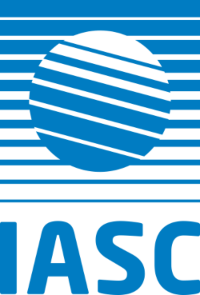Project Description
The Arctic is warming almost 4 times faster than the rest of the globe. Yet, how Arctic climate change will evolve remains highly uncertain, as there are large discrepancies in the projections from different climate models. At the heart of this uncertainty is our poor understanding of the aerosol-cloud interactions in the Arctic and thus their poor representation in the climate models. The cloud-aerosol puzzle is a rather complex problem, affected by several physical and chemical processes that span various scales. This is particularly true when it comes to the role of marine aerosols in the cloud lifecycle: the changing clouds contribute to changes in sea-ice extent and ocean temperature, which further impact marine biology. At the same time, changes in the marine biological activity result in modified marine aerosol fluxes that can alter cloud characteristics. To quantify these complex interactions, the QuIESCENT conference aims to gather Arctic atmospheric and marine scientists to (a) exchange knowledge and (b) work together to establish a coordinated plan on how to address these critical research questions. Finally, in the context of the fourth International Conference on Arctic Research Planning (ICARP IV) and the ongoing planning for the International Polar Year 2032-2033 (IPY32), QuiESCENT aims to address two main objectives: (a) to hierarchise our knowledge gaps in cloud-aerosol interactions and suggest research activities to address them in field and laboratory experiments and (b) propose modeling strategies to improve the efficiency of the knowledge transfer from observations to atmospheric models.
The QuIESCENT community identified the following research priorities that the community should focus on and advance:
- Quantify the contribution of the cloud-relevant aerosol sources from changing Arctic surfaces (leads, open water, shipping, fires)
- Improve our understanding of aerosol aging and Ice nucleatin Particles (ΙΝP) activity
- Improve our understanding of aerosol sources from understudied regions such as the Russian Arctic
- Advance our understanding of the boundary layer and cloud-phase partitioning in a changing Arctic climate
- Advance our understanding of turbulence, entrainment deposition, and INP recycling associated with clouds
- Foster broader evaluation of secondary ice production processes in Arctic clouds
- Enhance vertical cloud and aerosol profiling, particularly at long-term observatories
- Understand the combined influence of changes in Cloud Condensation Nuclei (CCN) and INP concentrations in the Arctic and perform sustained CCN and INP observations
- Improve our understanding of cloud radiative effects and their feedbacks from models and satellite data
Highlights
To deal with the above key research gaps during IPY32, the workshop participants propose the following strategies:
- Push the engineering envelope to support regular airborne sampling with improved small, lightweight sensors (e.g., from UAVs, cargo aircraft, and Tethered Balloon Systems)
- Advance our knowledge of climate-intervention techniques, including polar mixed phase cloud thinning and inadvertent seeding from stratospheric aerosol injection and cirrus cloud thinning
- Perform coordinated Pre-IPY Modeling Experiments to (a) identify uncertainties, (b) support campaign planning and (c) provide projections
- Extend the experimental focus beyond the field to include cloud chambers and other controlled environments
Date and Location
22-24 October 2024 | Lausanne, Switzerland
IASC Working Groups funding the project
- Atmosphere WG
- Marine WG
Project Lead
Georgia Sotiropoulou, Ecole Polytechnique Federale de Lausanne (EPFL), Switzerland and University of Athens, Greece
Year funded by IASC
2024
